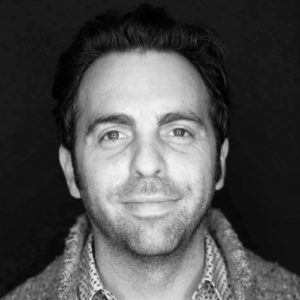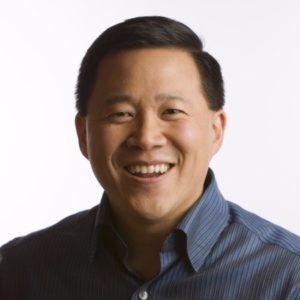Seed Capital
1Mby1M Virtual Accelerator Investor Forum: With Jonathan Lewy of Investo (Part 1)

Responding to a popular request, we are now sharing transcripts of our investor podcast interviews in this new series. The following interview with Jonathan Lewy was recorded in November 2017.
Jonathan Lewy, Managing Partner at Investo, discusses pre-seed investment strategies and the Series A gap.
Sramana Mitra: Tell us about your seed investing activities. Let’s get to know each other.
Jonathan Lewy: I’m a Managing Partner of Investo. Investo is an early-stage fund that invests mainly in the US and in Latin America. We have made 56 investments. 30% of which in Latin America. We’ve tried investing in other parts of the world but our focus is more US and Latin America. >>>
1Mby1M Virtual Accelerator Investor Forum: With Gus Tai of Trinity Ventures (Part 3)
Sramana Mitra: The whole experience of curated personal shopping is just barely starting to come into the fore. The computer science required to power that is going to deliver a very different kind of experience once that starts to come into existence. As Gus said, is it a large enough segment? Fashion is a gigantic segment. It’s one sector where I believe there’re going to be more venture-funded companies. Any thoughts on that?
Gus Tai: I do believe the concept behind Uuma would work today. When you’re thinking about starting a consumer-oriented company, it’s very important to understand how that company will be strongly differentiated from the other alternatives that customers will have.
One way to have that is to make it authentic to you and make sure that it’s a large enough market. In e-commerce, the >>>
8 Investors Discuss Seed Financing for B2B and B2C Startups in Podcasts

Different investors define seed for B2B and B2C in terms of metrics in different ways. A lot of funds are categorically stating that they want to see a certain amount of monthly recurring revenue already achieved before they’re willing to invest. That amount could be $40,000 or it could be $80,000, but there are specific metrics that they put forth as guidance for their funds. And these metrics can be different for B2B and B2C startups as well. During my recent 30-minute podcast interviews listed below, I’ve asked investors if they prefer to invest in B2B or B2C startups, and to share the benchmarks and metrics they use.
Dennis Joyce, Investor and Member of Alliance of Angels, talks about the largest Angel group in the Pacific Northwest.
Ben Mathias, Managing Partner at Vertex Ventures, India, discusses the trends and dynamics of the Indian startup eco-system, including exits. India needs exits at this point, even if they’re relatively small exits.
Patricia Nakache, General Partner at Trinity Ventures, discusses the firm’s investment thesis and some issues encountered by women in technology.
1Mby1M Virtual Accelerator Investor Forum: With Julien Nguyen of IT Farm (Part 4)
Sramana Mitra: The next question I want to ask you is about unicorn mania. You said you have three. You actually experienced being a seed investor in companies that have gone on to raise very large amounts of money at very large valuations. As a seed investor, you could get buried under later-stage liquidation preferences. How do you protect yourself? What are the dynamics that you see in these kinds of deals?
Julien Nguyen: We do a pro rata every time.
Sramana Mitra: But how much can you do? You’re still a very small fund. If a company is raising a $500 million round, it’s not easy for you to do a pro rata. >>>
1Mby1M Virtual Accelerator Investor Forum: With Gus Tai of Trinity Ventures (Part 2)
Sramana Mitra: The reason why I ask this question is to explain how a VC looks at an investment opportunity. Mark Vadon had his own investment thesis but Trinity Ventures and Gus also had their own investment thesis. The two thesis merged for an investment to happen. I’ve said this many a time. Over 99% of businesses that go out to seek financing actually get rejected.
One of the best examples of that is the fact that Marc Benioff got rejected by 27 VCs and look what happened. It’s nobody’s fault really. If VCs refuse to invest in your company, it’s not like they’re malicious or anything. It’s just that their investment theses don’t align. The question is, how can you understand better what it is that the investors are looking for. >>>
1Mby1M Virtual Accelerator Investor Forum: With Julien Nguyen of IT Farm (Part 3)
Julien Nguyen: Alzheimer’s certainly is a huge problem. It’s very important for everybody. It’s even more important because drug development to go against Alzheimers has hit a huge wall. All the major drugs have failed so far. One of the key reasons they have failed is they don’t know exactly how the patients are doing while they are taking the drug. They don’t know the progression of the disease. With Darmiyan, they would know if the brain has progressed or stabilized. You can do that before you have any symptom.
Sramana Mitra: Very interesting. I’m going to ask you some trend questions on what’s happening in the industry and how you process those. How do you process the current investment climate where capital is moving further and further upstream? How does a seed investor or an entrepreneur mitigate the Series A gap? >>>
1Mby1M Virtual Accelerator Investor Forum: With Gus Tai of Trinity Ventures (Part 1)

Responding to a popular request, we are now sharing transcripts of our investor podcast interviews in this new series. The following interview with Gus Tai was recorded in September 2014.
Gus Tai, General Partner at Trinity Ventures, discusses their investment thesis around e-commerce over the years – from BlueNile in 1999, to Zulily, Dot, and Bo, and Callisto Media more recently, and what he anticipates for the future.
Sramana Mitra: An outrageous e-commerce business that Gus and the firm invested in is a company called Blue Nile way back in 1999.
Gus Tai: Yes, we made the initial investment in 1999. >>>
1Mby1M Virtual Accelerator Investor Forum: With Julien Nguyen of IT Farm (Part 2)
Sramana Mitra: We’ve seen a bunch of unicorns come out of that part of the ecosystem. There’s Veeva and athenahealth on the payment side.
Julien Nguyen: That is just the beginning. There are deeper problems that can be solved. The number two part is using technology to increase the efficacy of current practices. For example, precision medicine is one of them. How do you pick the right cocktail of drugs for a cancer patient depending on their RNA?
This is not about inventing new drugs and finding new molecules. You’re just applying the ones we already have in a better way. Then you see a new area, which is the blue sky thing on aging, which everybody talks about. We feel that the first two areas are really >>>
